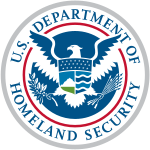This article may rely excessively on sources too closely associated with the subject , potentially preventing the article from being verifiable and neutral.(October 2015) |
| United States Under Secretary of Homeland Security for Science and Technology | |
|---|---|
 | |
| Constituting instrument | 6 U.S.C. § 113 |
| Formation | 2003 |
| Website | Official Website |
The Under Secretary of Homeland Security for Science and Technology is a high level civilian official in the United States Department of Homeland Security. The Under Secretary, as head of the Science and Technology Directorate at DHS, is the principal staff assistant and adviser to both the Secretary of Homeland Security and the Deputy Secretary of Homeland Security for all DHS technological research.
Contents
The Under Secretary is appointed from civilian life by the president with the consent of the Senate to serve at the pleasure of the president.

